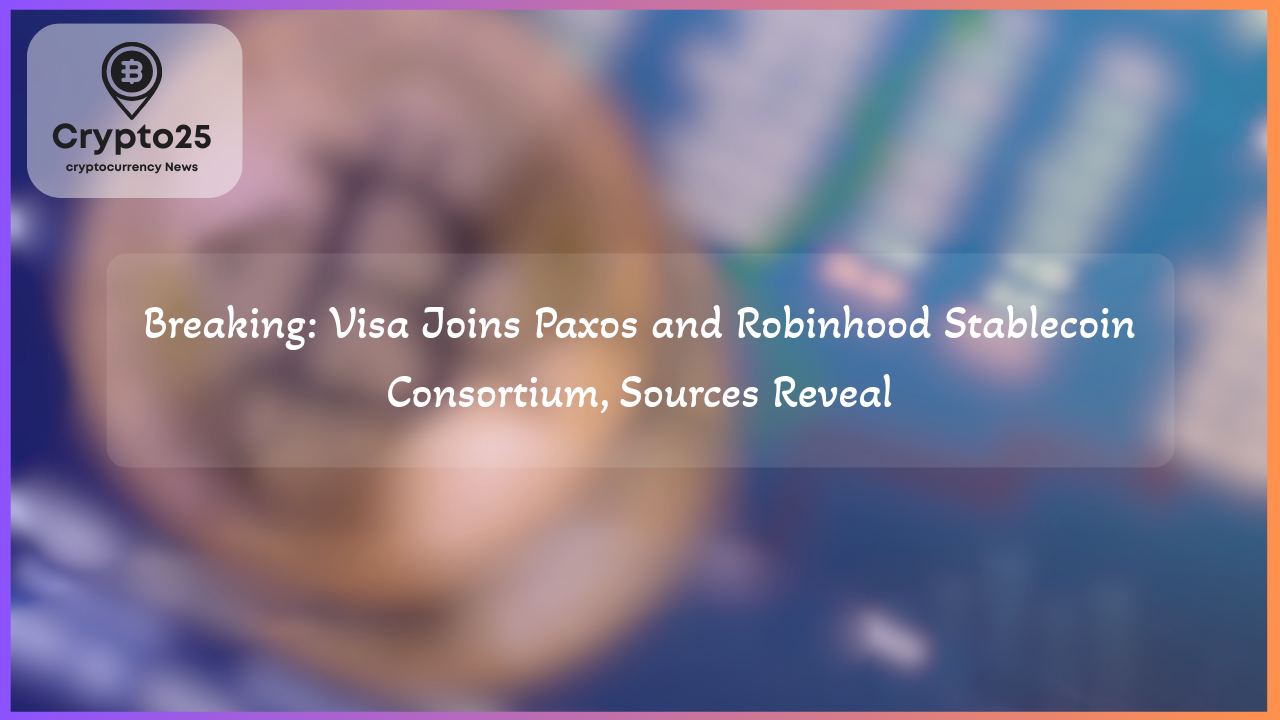
Visa, a household name in traditional finance, is making waves in the cryptocurrency sector by joining the Global Dollar Network (USDG), a stablecoin-focused consortium spearheaded by the U.S.-regulated digital asset firm Paxos. This significant move aligns Visa with key players in the blockchain ecosystem, including Robinhood, Kraken, Galaxy Digital, and Anchorage Digital. The move underscores the growing impact of stablecoins within the broader financial and regulatory framework.
## Visa Embraces USDG to Revolutionize the Stablecoin Market
By entering the USDG consortium, Visa becomes the first traditional finance titan to integrate with Paxos’ vision of modernizing stablecoin infrastructure. The initiative aims to reshape the stablecoin landscape by offering connectivity and liquidity while sharing yields with participant firms. Unlike Tether (USDT), which retains the interest from its reserves, USDG enables collaborative benefits among its members, making it a value-driven ecosystem. Alongside Visa, other prominent members of USDG include Bullish and Nuvei, signaling a collective push for innovation in the stablecoin business.
The decision reflects Visa’s commitment to finding its foothold in the crypto market as global financial trends increasingly lean towards blockchain-based assets. Stablecoins, pegged to fiat currencies like the U.S. dollar, provide a seamless bridge between traditional finance and the emerging digital economy. The inclusion of Visa in this consortium sends a strong message about the seriousness of established financial institutions embracing decentralized technologies.
## How Stablecoins Are Transforming Global Finance
Stablecoins have emerged as one of the most disruptive technologies in the financial industry, serving as a reliable option for instant payments and borderless transactions. The USD-pegged tokens, largely dominated by Tether (USDT) and Circle’s USDC, have proven their utility across industries, from remittances to decentralized finance (DeFi). However, the USDG network is positioning itself as an alternative model, focusing on transparency and equitable yield-sharing among ecosystem members.
This collaboration marks a historical shift from legacy finance to an interconnected system poised to challenge traditional banking structures. Paxos, which has developed a reputation for regulatory compliance, has partnered with global corporations like Visa, Robinhood, and Kraken to advance stablecoin usage. Through strategic partnerships, the USDG initiative aims to address the inefficiencies of existing models, paving the way for an inclusive network that drives liquidity, scalability, and cross-border innovations.
| Title | Details |
|---|---|
| Market Cap | $1.2 Trillion |
Fintech giants have also realized the high stakes involved. Both Visa and Mastercard are keenly exploring blockchain technology, demonstrating their efforts through collaborations with crypto-based innovators. Mastercard has joined forces with non-custodial wallet provider MetaMask, highlighting an industry-wide push to dominate the emerging Web3 space. Such developments are a clear indication of established players adapting to the evolving financial ecosystem to maintain relevance and profitability.
## The Road Ahead for Visa and the Crypto Ecosystem
Visa’s integration with USDG represents more than a mere collaboration—it stands as a bold declaration of how traditional financial institutions are embracing the inevitability of blockchain adoption. This move reflects a deeper understanding of the role stablecoins play in shaping the future of commerce and financial infrastructure.
As the cryptocurrency market matures, alongside increasing regulatory oversight, stablecoins are attracting traditional financial players eager to align themselves with regulatory-friendly blockchain solutions. Visa’s efforts to partner with key innovators in the crypto space, like Paxos and World Network, demonstrate its proactive investment in the next era of finance. Mastercard’s ongoing initiatives in the sector further signal that blockchain technology is no longer an experiment but a critical area for future opportunities.
Given the thriving interest from both investors and institutions, it will be intriguing to see whether USDG’s collaborative framework becomes the blueprint for stablecoin governance. With Visa pioneering the traditional world’s efforts in USDG, the consortium could redefine how industry leaders collaborate, innovate, and share benefits in an increasingly digital-first global economy.
Stablecoins are undoubtedly reshaping the way transactions are conducted, promising efficiency, inclusivity, and pioneering improvements for the financial world. Visa’s involvement in USDG reaffirms its foresight as an industry frontrunner steering finance toward blockchain adoption. As stablecoins gain prominence, the collaboration between traditional finance and the decentralized universe reflects a future rich with potential and innovation.
